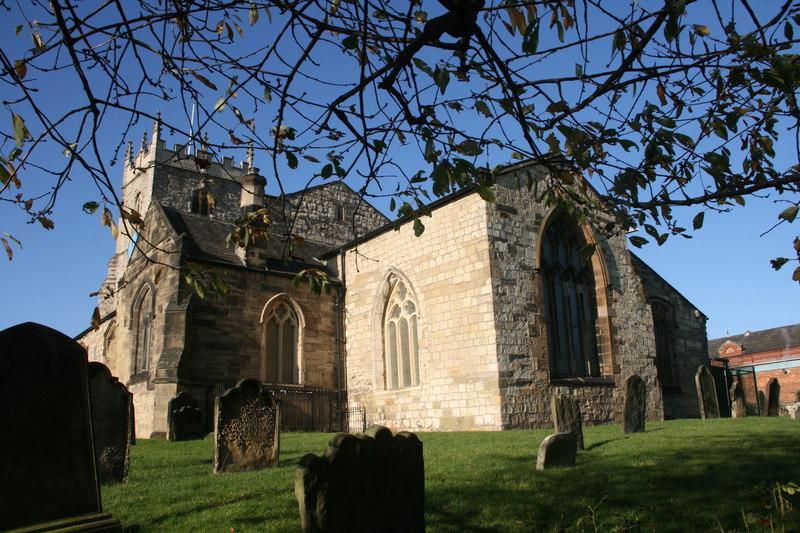St Aidan
Hartlepool, County Durham
St Aidan's stands in a prominent position and is a red brick Victorian building designed in the Early English style, dedicated in 1890.

Attractive traditional Grade II* listed church with 12th centrury origins, many old features, belltower, organ and historic associations in the Stranton area of Hartlepool.
Stranton, County Durham
No one knows for sure how old Stranton church is. The central part of the present building dates back to around the 12th century. It is highly likely that there was a previous building on the site, and a recent archaeological survey concluded that large stones in the wall of the nave are Saxon.
In medieval times, the historic parish of Stranton covered almost the whole of what is now Hartlepool, except for the old town of Hartlepool on the headland. The church stands on this ancient site on a hill easily seen by anyone. Stranton, ‘the town on the shore’, was the old Saxon village where, until the mid 19th century, white washed cottages surrounded a green. There was a pond, a vicarage, and mill with the church on the hill. The sea washed the shore to the east.
Robert de Brus granted Stranton's patronage to Gisborough Priory about 1120. The vicarage was ordained before 1234 and Stranton appropriated the Priory. This meant the tithes went to them. After the Dissolution of the Monasteries in 1536, Henry VIII took over the patronage for the crown which it retained until 1607.
Like many English churches Stranton is a mixture of styles and stonework. Apart from the Saxon stonework in the nave, the oldest part of the building is the 12th century semicircular arch in the east wall behind the Communion table. About 1280, a north aisle was added; the tower arch and a north arcade were built. Then in the 14th century, the chancel was reconstructed, the south aisle added, the tower remodeled and the upper part built. In the 15th century, a chapel, now called the Fulthorpe Chapel, was added to the north side of the chancel. The whole north wall of the chancel was taken down and two arches inserted. At the same time a new chancel arch was added and the clerestory and the porch were built.
The next transformation took place in the 18th century. A gallery was put above the north aisle and the nave was completely altered on that side. The north clerestory was removed, the aisle wall raised and a new roof of a flatter pitch put over the nave on the north side. The Fulthorpe Chapel roof was altered in pitch and the side walls raised. The chapel was converted into a school which meant resulted in the arches being bricked up. The walls and stonework were whitewashed and the paintings, which used to adorn the walls, were covered over.
In Victorian times, two vestries were added to the north side of the building: one is now the choir vestry and the other the kitchen. The organ chamber was also built to house the fine Abbott and Smith organ (1889).
The building has continued to develop in recent years. In the 1980s, the Fulthorpe Chapel was screened off from the chancel and has become a well loved place for meetings. The vicar's vestry is now under the tower where it was placed in the early 1990's at the time when the gallery was built in the tower. It now doubles as a creche, a sign of the way this ancient building continues to evolve to meet new needs.
Hartlepool, County Durham
St Aidan's stands in a prominent position and is a red brick Victorian building designed in the Early English style, dedicated in 1890.
Hartlepool, County Durham
Magnificent Early English church with enormous buttresses, a 7th century name stone and visitor centre.
Seaton Carew, County Durham